The Cessna 172N Parts Manual is a comprehensive guide essential for aircraft maintenance and repairs. It outlines standard parts and features a numerical index for easy part identification.
1.1 Overview of the Cessna 172N Aircraft
The Cessna 172N Skyhawk is a widely popular, four-seat, single-engine aircraft known for its reliability and durability. With over 43,000 units produced, it remains one of the most common training and personal aircraft worldwide. The 172N model features a 180-horsepower engine, offering improved fuel efficiency and performance compared to earlier models. Its robust design and versatility make it ideal for flight training, recreational flying, and short-distance commuting. The aircraft’s enduring popularity has led to extensive support, including detailed parts manuals, ensuring owners and mechanics can maintain and repair it effectively. This manual is a critical resource for anyone working with the Cessna 172N.
1;2 Importance of the Parts Manual for Maintenance and Repair
The Cessna 172N Parts Manual is indispensable for maintaining and repairing the aircraft. It provides detailed part numbers, descriptions, and diagrams, ensuring accurate identification and procurement of components. By referencing the manual, mechanics can quickly locate and order necessary parts, minimizing downtime. The manual also aids in complying with FAA regulations and airworthiness standards. Regular updates ensure users have the latest information for maintenance and inspections. Without the parts manual, identifying and replacing parts efficiently would be challenging, potentially leading to safety risks. It is a critical tool for anyone involved in the upkeep of the Cessna 172N, ensuring reliability and safety in operation.
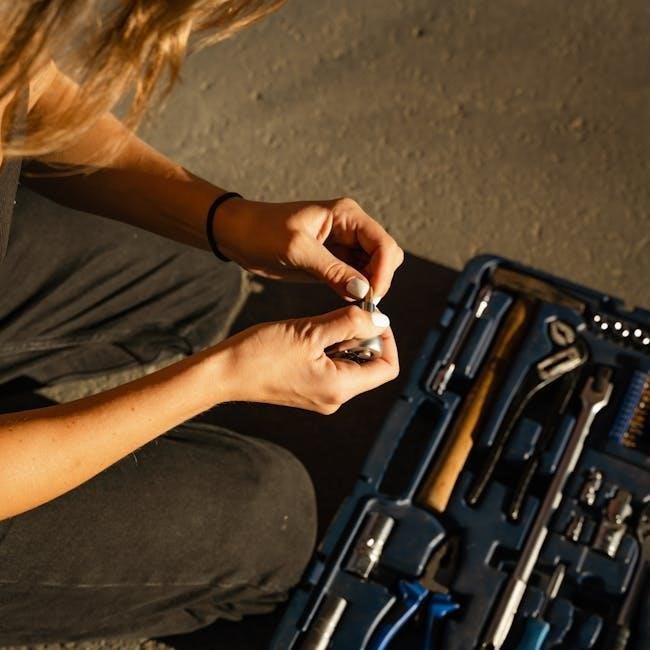
Structure and Content of the Cessna 172N Parts Manual
The manual is organized into sections, including standard parts designation, numerical indexing, and technical drawings. It provides detailed part numbers, descriptions, and diagrams for easy identification and ordering.
2.1 Standard Parts and Their Designation System
The Cessna 172N parts manual employs a standardized designation system to identify components. Each part is assigned a unique identifier, typically a combination of numbers and letters, reflecting its category and function. For instance, airframe parts are categorized separately from engine components. This system ensures clarity and ease of reference, allowing mechanics to quickly locate and order necessary parts. The manual also includes cross-references to related components, aiding in comprehensive maintenance. The designation system is consistent across all sections, ensuring uniformity and reducing errors during repairs. This organized approach enhances efficiency and accuracy in maintaining the aircraft’s airworthiness and operational safety.
2.2 Numerical Index for Easy Part Identification
The Cessna 172N parts manual features a numerical index designed to simplify part identification. This index lists parts by their numerical designations, allowing users to quickly locate specific components. Each entry includes the part number, a brief description, and a reference to the relevant section or page in the manual. This system streamlines the search process, reducing time spent on lookup tasks. The index is organized in ascending numerical order, ensuring logical navigation. It covers all major systems, from airframe to avionics, making it an indispensable tool for mechanics and maintenance personnel. The numerical index enhances efficiency and accuracy in parts identification and ordering.
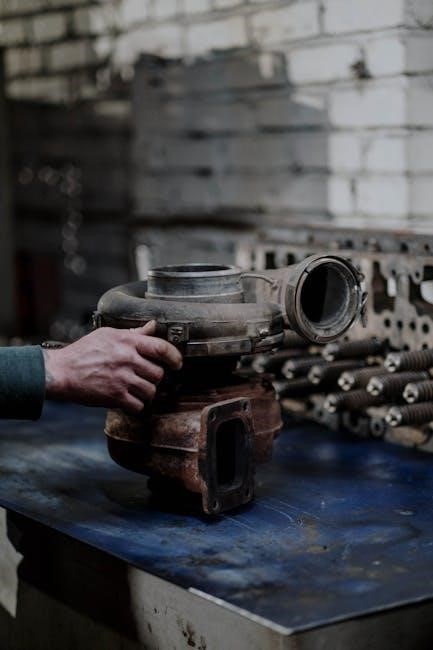
Wing Components and Technical Drawings
The Cessna 172N parts manual details wing components like spars, ribs, and skin panels, supported by technical drawings for clear assembly and repair guidance.
3.1 Detailed Engineering Schematics of the Wings
The Cessna 172N parts manual provides comprehensive engineering schematics for wing components, detailing structural elements like spars, ribs, and skin panels. These schematics include precise measurements, material specifications, and assembly instructions. They are essential for identifying and replacing parts accurately during maintenance or repairs. The diagrams highlight critical areas such as the wing’s attachment points, control surfaces, and fuel tank integration. Technicians rely on these schematics to ensure proper alignment and installation of components. The detailed visuals also aid in understanding load distribution and stress points, crucial for maintaining airworthiness. These schematics are complemented by notes and symbols explaining manufacturing tolerances and inspection criteria.
3.2 Wing Structure and Components
The Cessna 172N wing structure consists of a robust framework designed for durability and aerodynamic efficiency. Key components include the main spar, auxiliary spar, ribs, and skin panels, which collectively provide structural integrity. The wings feature a NACA 2412 airfoil shape, optimizing lift generation. Control surfaces such as ailerons and flaps are integral to flight maneuverability. The fuel tanks are integrated into the wings, with fuel caps and vents ensuring proper operation. Each component is precision-engineered to withstand various flight conditions. The manual details part numbers, materials, and specifications for these elements, ensuring accurate identification and replacement during maintenance. This section is vital for understanding wing anatomy and functionality.

Landing Gear and Related Parts
The Cessna 172N landing gear includes the main gear, nose gear, and associated components like bushings, axle nuts, and fairings. Proper maintenance ensures safe operations.
4.1 Part Number for the Left Landing Gear Strut Fairing
The left landing gear strut fairing for the Cessna 172N is designated by the part number 0513534-1. This component is essential for reducing drag and maintaining the structural integrity of the landing gear assembly. Manufactured from durable aluminum alloy, it is designed to withstand the stresses of repeated landings and taxi operations. The fairing is secured to the strut using screws and rivets, ensuring a snug fit. For accurate identification, refer to the Illustrated Parts Catalog (IPC) or consult authorized Cessna service centers. Always verify compatibility with your aircraft’s serial number and modification status before ordering or installing this part.
4.2 Sources for Landing Gear Components
Obtaining genuine landing gear components for the Cessna 172N requires sourcing from authorized distributors or the manufacturer directly. Cessna Aircraft Company and its approved suppliers ensure parts meet strict quality and safety standards. The Illustrated Parts Catalog (IPC) provides detailed information to identify and order correct components. Additionally, reputable aviation suppliers like Gulfstream Aerospace and Textron Aviation offer authentic parts. Online marketplaces specializing in aviation components, such as Aviall or Univair, also provide solutions. For cost-effective options, consider certified salvage yards or repair stations. Always verify the source’s certification and the part’s airworthiness before purchase to ensure compliance with FAA regulations.

Engine and Propeller Parts
The Cessna 172N’s engine and propeller parts are critical for performance and safety. Regular maintenance ensures reliability, with parts sourced from trusted suppliers or the manufacturer directly.
5.1 Standard Parts for Engine Maintenance
The Cessna 172N engine maintenance requires standard parts like oil filters, spark plugs, and air filters. These components ensure optimal performance and longevity. Oil filters prevent contamination, while spark plugs maintain proper ignition. Air filters improve airflow efficiency, reducing wear on the engine. Regular replacement of these parts is crucial for reliable operation. OEM or FAA-approved aftermarket parts are recommended to meet safety and quality standards. Always refer to the parts manual for exact specifications and part numbers. Proper maintenance scheduling, as outlined in the manual, helps prevent engine issues and ensures compliance with airworthiness requirements.
5.2 Propeller Components and Part Numbers
The Cessna 172N propeller system includes critical components such as the spinner, blades, hub, and retaining bolts. Each part is designated with specific numbers for easy identification and ordering. For example, the propeller spinner is often listed under part number 0745000-1, while the blades may be referenced as 0746010-21. These components are typically made from durable materials like aluminum alloy for the spinner and erosion-resistant coatings for the blades. Proper maintenance requires using OEM or FAA/PMA-approved parts to ensure safety and performance. Always consult the parts manual for accurate part numbers and compatibility before making any replacements or repairs.
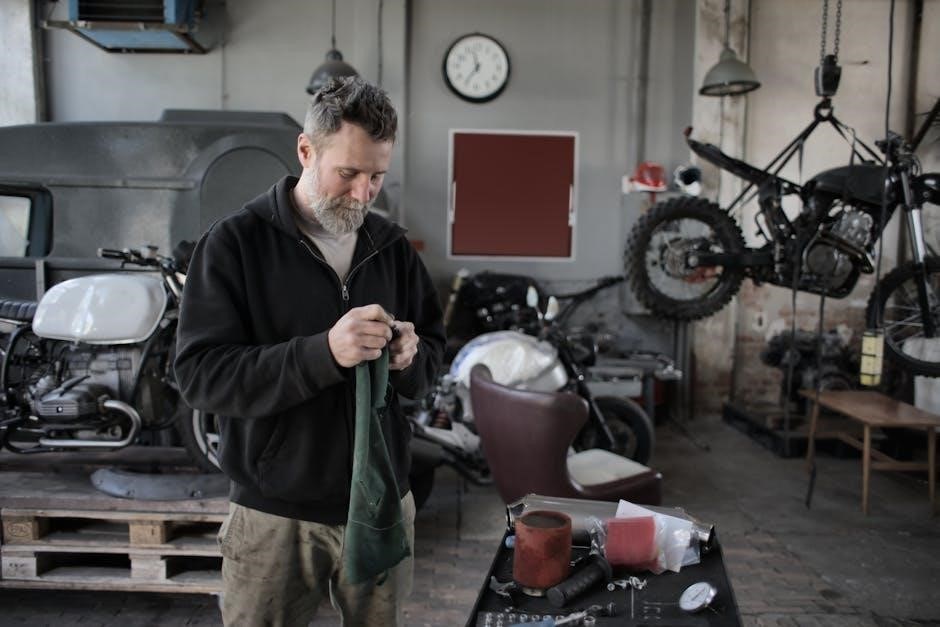
Avionics and Instrumentation
The Cessna 172N features a standard avionics suite, including a communications radio, GPS, and navigation instruments. These systems are essential for safe and efficient flight operations.
6.1 Identification of Cockpit Instruments
The Cessna 172N cockpit features a range of instruments essential for flight operations, including the altimeter, airspeed indicator, heading indicator, and tachometer. These instruments are located on the main instrument panel and are identified by their specific functions and part numbers in the manual. The altimeter, for example, is part number 0661031-03, while the heading indicator is part number 0661011-07. The manual provides detailed descriptions, diagrams, and part numbers to help mechanics and pilots identify and replace these components. Correct identification ensures compliance with FAA standards and guarantees proper aircraft performance. This section is critical for routine maintenance and troubleshooting.
6.2 Part Numbers for Avionics Components
The Cessna 172N parts manual provides specific part numbers for avionics components, ensuring accurate identification and procurement. The communication radio, for instance, is designated as part number 0513581-01, while the GPS unit is listed as 0132022-05. These numbers are cross-referenced with detailed descriptions to avoid confusion. The manual also includes part numbers for navigation indicators, such as the VOR/LOC indicator (part number 0513581-01), and other essential avionics. Mechanics and pilots rely on these part numbers to maintain compliance with FAA standards and ensure proper aircraft functionality. This section is indispensable for efficient maintenance and upgrades of the avionics system;
Maintenance and Inspection Intervals
The Cessna 172N requires regular maintenance checks every 50 flight hours and detailed inspections every 100 hours to ensure safety, longevity, and compliance with regulations.
7.1 Scheduled Maintenance Parts and Procedures
The Cessna 172N parts manual outlines essential maintenance schedules to ensure aircraft airworthiness. Regular checks include oil filter replacements, air filter inspections, and spark plug servicing. Hydraulic fluid levels and tire pressures must be verified periodically. Brake pads and landing gear components are inspected every 100 flight hours. Engine mounts and control surfaces are checked for wear. The manual specifies torque values for bolts and nuts, and lubrication intervals for moving parts. Adhering to these schedules prevents premature wear and ensures safe operation. Technicians must follow manufacturer guidelines strictly to maintain compliance and performance standards.
7.2 Airworthiness Directives (ADs) Compliance
Airworthiness Directives (ADs) are mandatory regulations issued by the FAA to address safety concerns. The Cessna 172N parts manual provides critical information for complying with ADs, ensuring the aircraft remains airworthy. It lists specific parts requiring inspection or replacement and outlines procedures to resolve safety issues. Technicians must reference the manual to identify affected components and follow prescribed maintenance protocols. Non-compliance with ADs can lead to operational restrictions or safety risks. Regular updates to the manual reflect new ADs, ensuring owners and mechanics stay informed. Adherence to these directives is essential for maintaining safe flight operations and regulatory compliance.
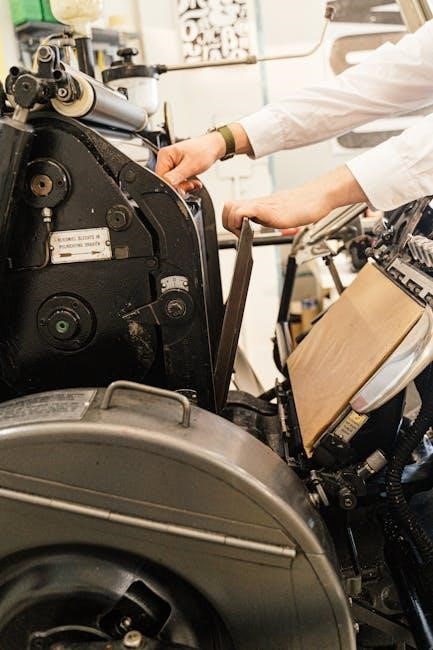
Costs and Lead Times for Parts
Costs for Cessna 172N parts vary based on complexity, availability, and supplier. Lead times depend on manufacturing schedules, shipping, and global supply chain dynamics. Planning ahead is crucial.
8.1 Pricing of Commonly Replaced Parts
The pricing of commonly replaced parts for the Cessna 172N varies based on the component’s complexity and availability. For example, tires and brakes are relatively affordable, with prices ranging from $100 to $500. Oil filters and spark plugs are even more economical, often costing between $20 to $100. However, more complex systems, such as avionics or engine components, can range from $1,000 to $10,000 or more. It’s important to compare prices from certified suppliers and consider OEM versus aftermarket options, as this can significantly impact costs. Always verify part compatibility and ensure compliance with FAA regulations when purchasing.
8.2 Factors Affecting Lead Times for Parts
Lead times for Cessna 172N parts are influenced by several factors, including part availability, supplier lead times, and shipping logistics. Common parts like tires and brakes typically have shorter lead times, often 1-3 weeks, due to high demand and stock availability. However, less common or obsolete parts may require up to 6-12 weeks or more, depending on manufacturing schedules. International shipping and customs delays can extend wait periods, while high demand during peak maintenance seasons may cause supplier backlogs. Additionally, production lead times for fabricated or specialized components can significantly increase overall delivery times. Planning ahead and maintaining an inventory of critical parts can help mitigate delays.
Troubleshooting Common Issues
Troubleshooting common issues in the Cessna 172N involves identifying malfunctions, such as electrical system failures or avionics glitches, and performing diagnostic checks to isolate the root cause. Regular maintenance, referencing the parts manual, and adhering to repair procedures ensure timely resolution. Pilots and mechanics must systematically analyze symptoms, consult technical documentation, and replace faulty components to restore aircraft functionality and safety.
9.1 Identifying and Replacing Faulty Components
Identifying and replacing faulty components in the Cessna 172N requires a systematic approach, starting with diagnostic checks using the parts manual. Pilots and mechanics should refer to technical drawings and part numbers to pinpoint issues. Regular inspections and troubleshooting guides help identify worn or damaged parts. Once a faulty component is identified, the manual provides step-by-step procedures for removal and replacement. Ensure all tools and replacement parts meet OEM specifications for safety and compliance. After replacement, conduct thorough testing to confirm proper functionality. Proper documentation of repairs is essential for maintenance records and future reference.
9.2 Diagnosis of Common System Failures
The Cessna 172N parts manual aids in diagnosing common system failures by providing detailed troubleshooting guides. Pilots and mechanics can identify issues in fuel, electrical, and hydraulic systems by referencing symptom-based diagnostic charts. For example, engine sputtering may indicate faulty fuel injectors, while low oil pressure could signal a worn pump. The manual outlines step-by-step procedures for testing components and interpreting error codes. Visual inspections of wiring, hoses, and connectors are also recommended to detect wear or damage. By following these diagnostic steps, technicians can pinpoint failures accurately, ensuring timely repairs and maintaining aircraft airworthiness. Regular preventive maintenance further reduces the likelihood of system failures.
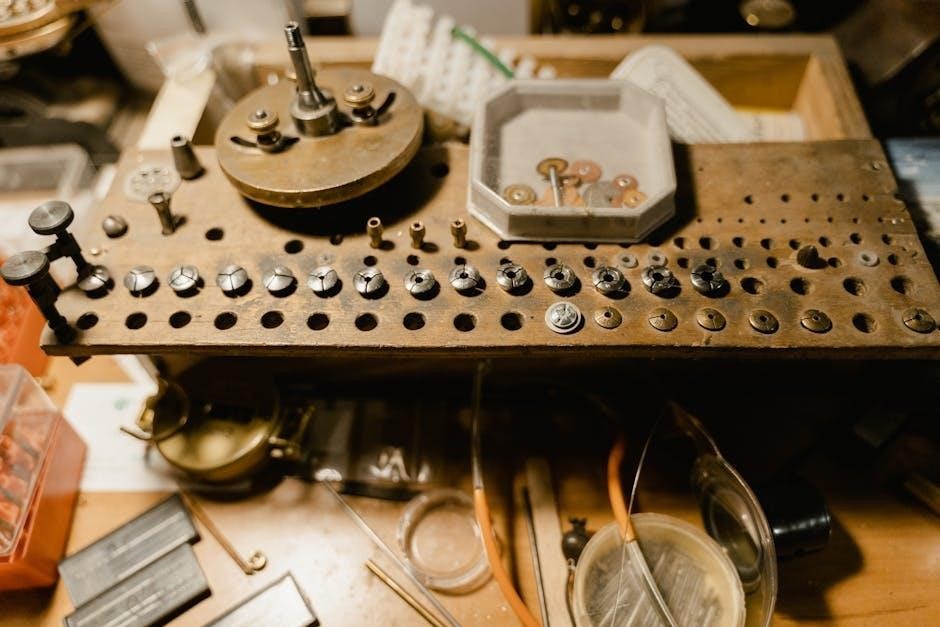
Legal and Safety Considerations
Adherence to FAA regulations and safety protocols is critical when working with Cessna 172N parts. Proper documentation and training ensure compliance, minimizing risks during maintenance and operation.
10.1 Compliance with FAA Regulations
Compliance with FAA regulations is paramount when working with the Cessna 172N parts manual. All maintenance and repairs must adhere to federal aviation standards to ensure airworthiness and safety. The FAA mandates specific procedures for part replacements, inspections, and documentation. Using certified parts and following approved repair procedures are essential to avoid legal issues and maintain compliance. Additionally, technicians must stay updated on Airworthiness Directives (ADs) and Service Bulletins that apply to the Cessna 172N. Proper record-keeping and reporting are also required to demonstrate adherence to regulatory requirements. Non-compliance can result in penalties, grounding of the aircraft, or even accidents. Always consult FAA guidelines before initiating any maintenance activity.
10.2 Safety Precautions During Parts Replacement
When replacing parts on the Cessna 172N, adhering to safety precautions is critical to prevent accidents and ensure proper maintenance. Always wear protective gear, such as gloves and safety glasses, to safeguard against injuries. Properly secure the aircraft using jack stands and chocks to prevent movement during repairs. Disconnect electrical and hydraulic systems before working on them to avoid unexpected activation. Use approved tools and follow the manual’s procedures to minimize risks. Inspect replacement parts for damage before installation and ensure all fasteners are tightened to specified torque values. Maintain a clean workspace to prevent contamination of components. Double-check all work before returning the aircraft to service. Always follow safety protocols to ensure the integrity of the aircraft and the safety of personnel involved.
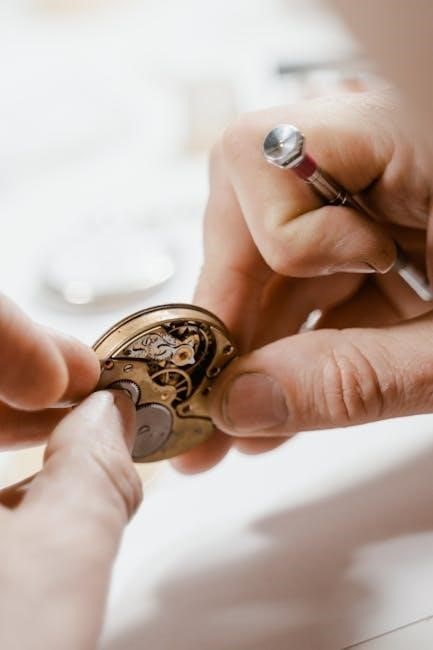
Accessories and Upgrades
Explore optional enhancements for the Cessna 172N, including performance upgrades, interior modifications, and avionics improvements to customize and modernize your aircraft.
11.1 Popular Aftermarket Accessories
The Cessna 172N offers a variety of aftermarket accessories to enhance performance, comfort, and functionality. Popular upgrades include high-performance propellers, such as the McCauley or Hartzell designs, which improve climb rates and fuel efficiency. Additionally, STOL kits are favored for shorter takeoff and landing capabilities, benefiting pilots operating in remote or challenging environments. Interior upgrades like premium seating, noise-reduction panels, and modern lighting systems are also in demand. These accessories not only personalize the aircraft but also increase its value and operational versatility, making them worthwhile investments for pilots seeking to optimize their flying experience.
11.2 Upgrading Components for Enhanced Performance
Upgrading components in the Cessna 172N can significantly enhance performance, making it more efficient and capable. Engine upgrades, such as installing a more powerful Lycoming or Continental engine, can improve climb rates and cruising speeds. Propeller upgrades, like switching to a constant-speed propeller, optimize performance across various altitudes. Lightweight aluminum and composite components reduce weight, enhancing fuel efficiency. Additionally, aerodynamic modifications, such as wingtip extensions, reduce drag and improve handling. Avionics upgrades, including advanced GPS and autopilot systems, also contribute to better performance and safety; These upgrades not only boost the aircraft’s capabilities but also increase its resale value and pilot satisfaction.
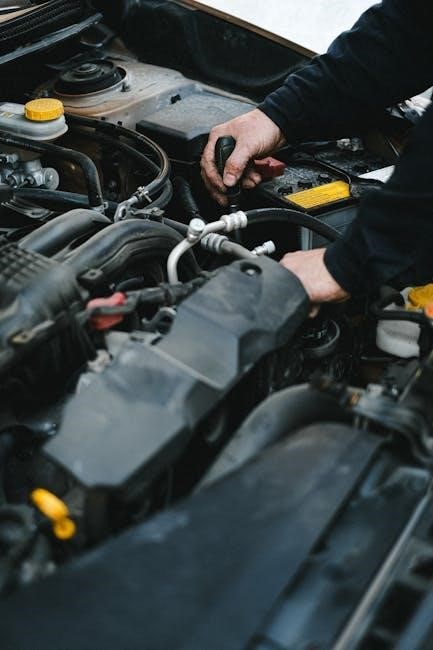
Digital and Online Resources
Digital platforms provide easy access to the Cessna 172N parts manual, interactive tools, and online forums for maintenance discussions. Manufacturer websites and aviation communities offer support.
12.1 Downloading the Illustrated Parts Catalog
The Cessna 172N Illustrated Parts Catalog (IPC) is available for download from official Cessna websites or authorized distributors. This digital resource provides detailed schematics, part numbers, and descriptions for every component. It includes interactive features like search functions and hyperlinked indexes for easy navigation. The catalog is typically in PDF format, enabling access on computers, tablets, and smartphones. Regular updates ensure compliance with the latest technical specifications. Pilots and mechanics can reference it for accurate parts identification, streamlining maintenance and repair processes. Downloading the IPC is essential for anyone needing quick access to detailed parts information for the Cessna 172N aircraft.
12.2 Online Forums and Communities for Parts Information
Online forums and aviation communities are invaluable resources for Cessna 172N parts information. Platforms like Reddit’s r/aviation, AOPA forums, and specialized aircraft maintenance groups offer direct access to experienced pilots, mechanics, and parts suppliers. These communities provide real-world insights, troubleshooting tips, and recommendations for sourcing rare or hard-to-find parts. Users can ask specific questions, share experiences, and receive guidance on maintaining compliance with FAA standards. Additionally, these forums often include links to trusted suppliers and repair services, making them a comprehensive resource for anyone involved in Cessna 172N maintenance or repair. Engaging with these communities fosters collaboration and ensures accurate parts information is readily available.
The Cessna 172N Parts Manual is a comprehensive guide for maintenance and repair, ensuring safety and compliance. It streamlines processes and supports future advancements in aviation.
13.1 Summary of Key Points
The Cessna 172N Parts Manual is an essential resource for aircraft maintenance, providing detailed part numbers, technical drawings, and maintenance procedures. It ensures compliance with FAA regulations and airworthiness standards. The manual’s structured format, including numerical indexing and component identification, facilitates efficient parts replacement and troubleshooting. Regular inspection intervals and adherence to ADs are emphasized for safety. Additionally, the manual highlights cost considerations and lead times for parts, aiding in resource planning. Its comprehensive coverage supports both routine maintenance and complex repairs, ensuring the aircraft’s optimal performance and longevity.
13.2 Future of Parts Manuals and Maintenance Practices
The future of parts manuals and maintenance practices for the Cessna 172N is expected to evolve with advancements in technology. Digital manuals and interactive 3D models will likely replace traditional paper formats, offering real-time updates and enhanced accessibility. Predictive maintenance, enabled by IoT sensors, will optimize part replacement schedules, reducing downtime and costs. Additionally, augmented reality (AR) tools may revolutionize troubleshooting and training, providing immersive guidance for technicians. Sustainability will also play a role, with a focus on eco-friendly materials and practices. As aviation technology advances, the integration of AI for diagnostic support and automated inspections will further streamline maintenance processes, ensuring safer and more efficient practices.